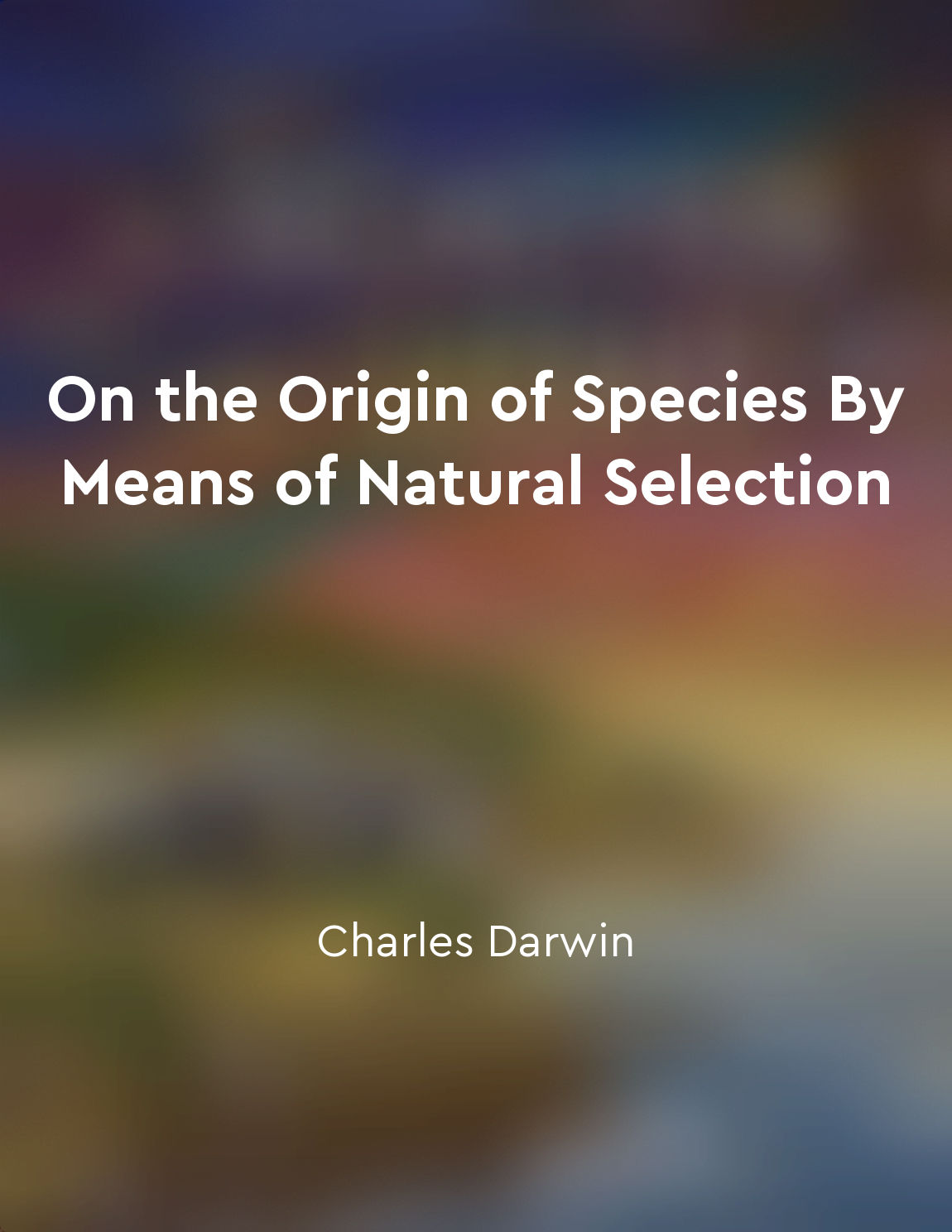Sexual selection influences mating preferences and traits from "summary" of The Greatest Show on Earth by Richard Dawkins
Sexual selection is a powerful force in the natural world, driving the evolution of traits that influence mating preferences. This process can lead to the development of elaborate displays and behaviors that help individuals attract mates and secure reproductive success. These traits are not necessarily beneficial for survival in a harsh environment, but they are crucial for successful reproduction. Mating preferences are shaped by a variety of factors, including genetic predispositions and environmental influences. Individuals may be drawn to certain traits in potential mates, such as physical appearance, behavior, or displays of strength or intelligence. These preferences can vary widely among species, and may change over time as populations adapt to new challenges. In many cases, sexual selection can lead to the evolution of exaggerated or extreme traits that are costly to maintain. For example, a male peacock's elaborate tail feathers may be attractive to females, but they also make him more vulnerable to predators. Despite this risk, the benefits of attracting a mate may outweigh the costs of maintaining such a showy display. Mating preferences and traits are constantly evolving as populations respond to changing environmental conditions and competition for mates. In some cases, these changes may lead to the development of new species or the extinction of existing ones. Sexual selection plays a key role in shaping the diversity of life on Earth, driving the evolution of unique traits and behaviors that help individuals succeed in the complex and competitive world of mating.Similar Posts
Einstein's theory of relativity revolutionized physics
Einstein's theory of relativity stands as a monumental achievement in the history of physics. This groundbreaking concept not o...

Selfawareness is key to understanding uniqueness
The concept of self-awareness is fundamental to grasping the essence of uniqueness. By being self-aware, individuals can truly ...
The concept of heredity and its implications
The concept of heredity is one of great importance in understanding the nature of living organisms. It is through heredity that...
The harmony between faith and reason is a testament to God's design
The concept of harmony between faith and reason is a fundamental aspect of understanding the world around us. It is a reflectio...

Common ancestry of all species
The idea that all living beings have descended from a common ancestor holds immense implications for the study of biology. It i...
Speciation leads to the formation of new species
Speciation is the process by which one species splits into two or more separate species. It is a fundamental mechanism underlyi...

Diversity results from divergence over time
The gradual process of natural selection leads to the divergence of species over time. As individuals within a species face dif...
Evolutionary arms races lead to the escalation of traits
In the perpetual competition for reproductive success, organisms engage in an evolutionary arms race that drives the escalation...
